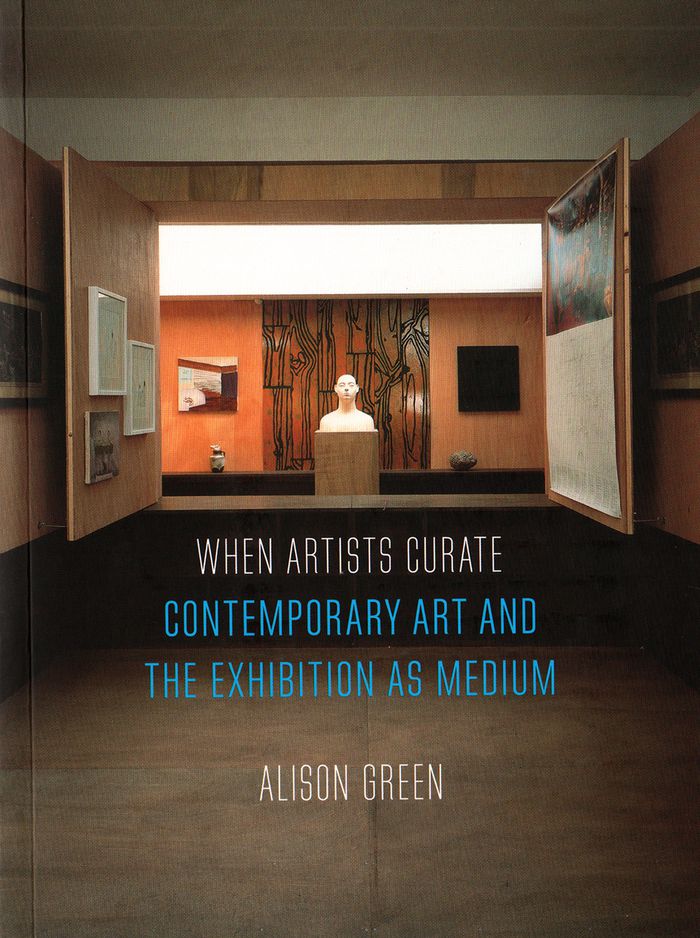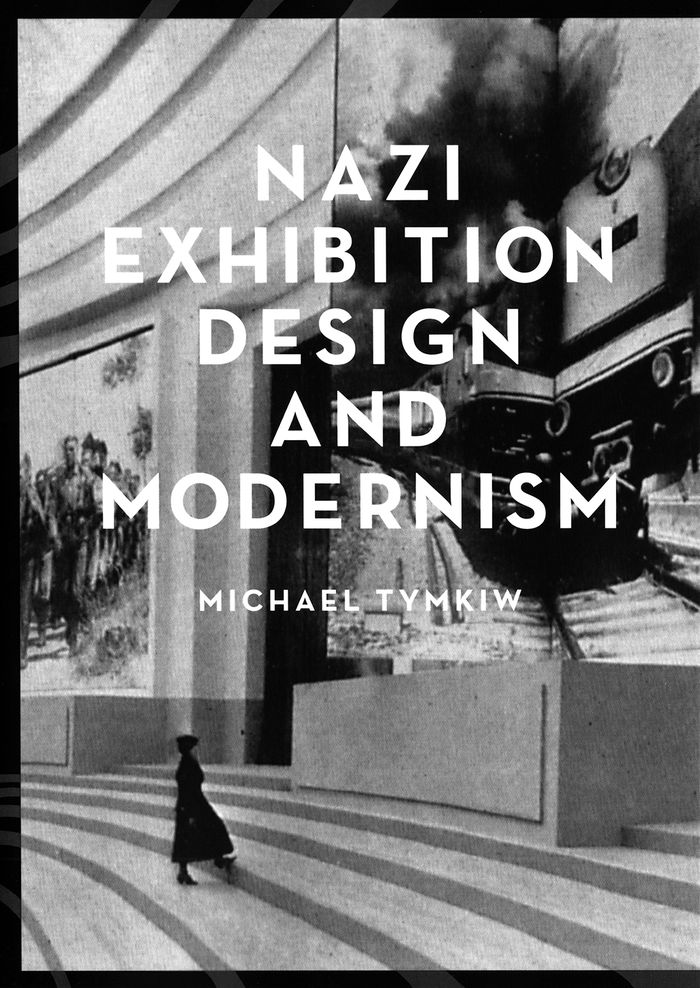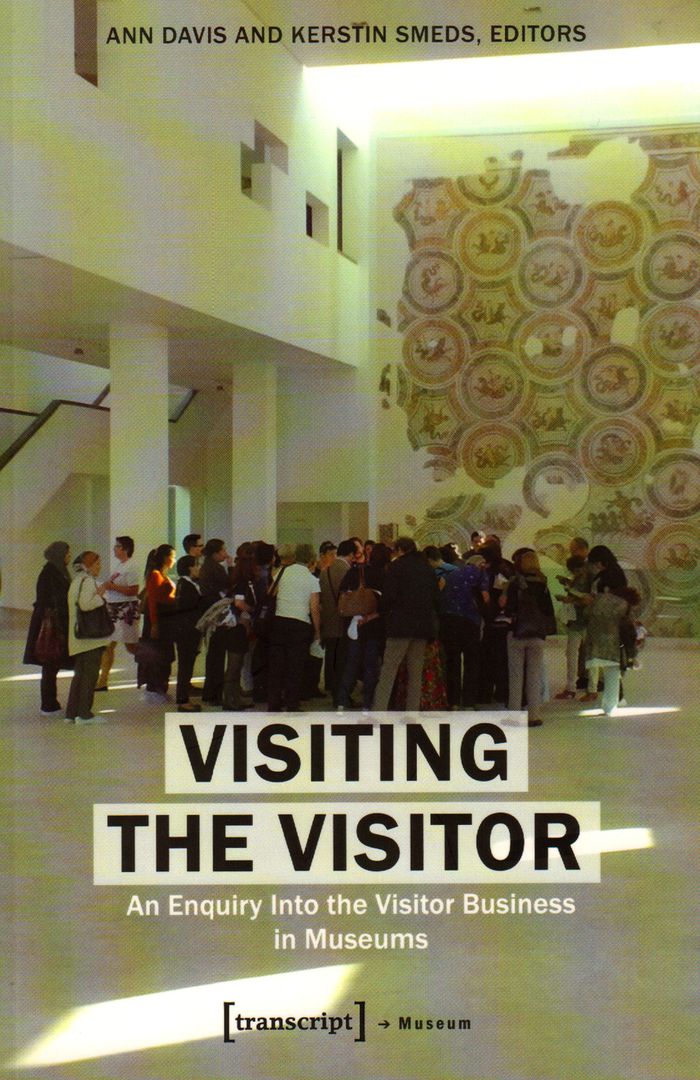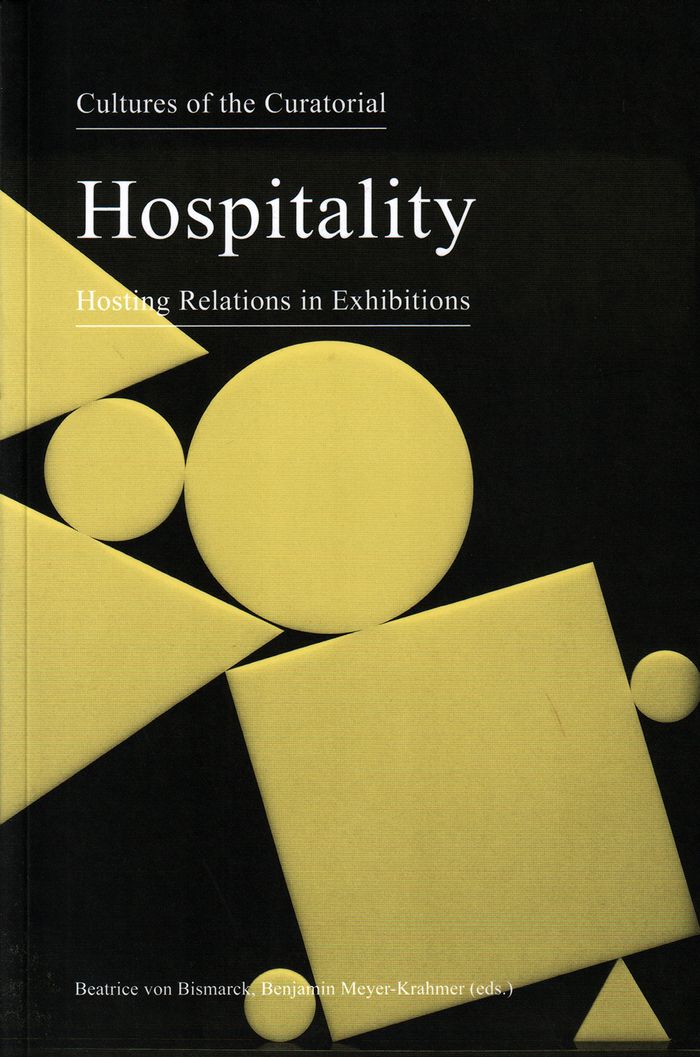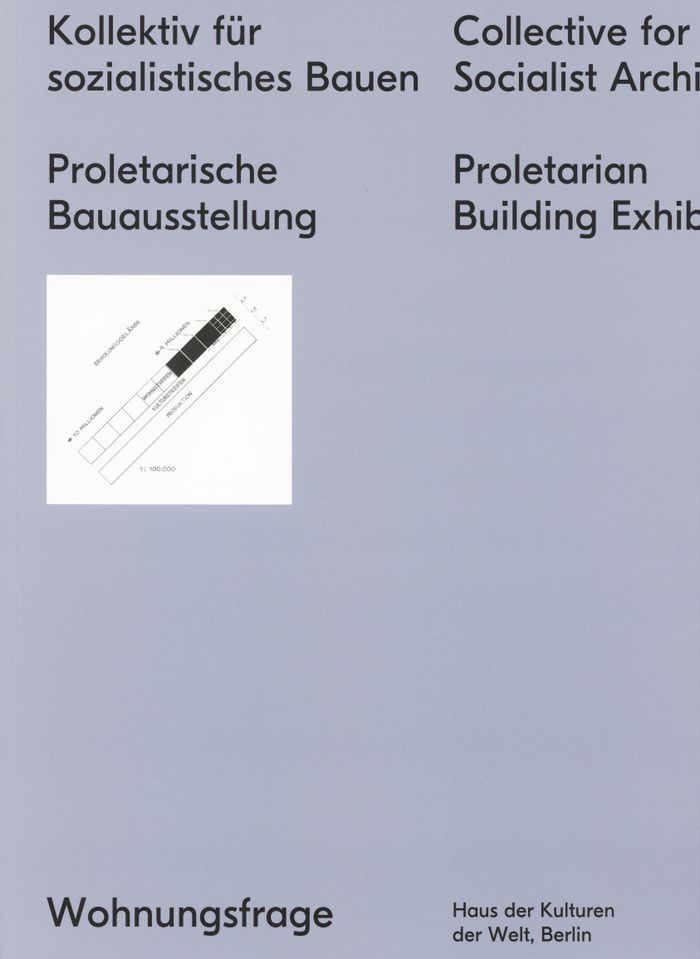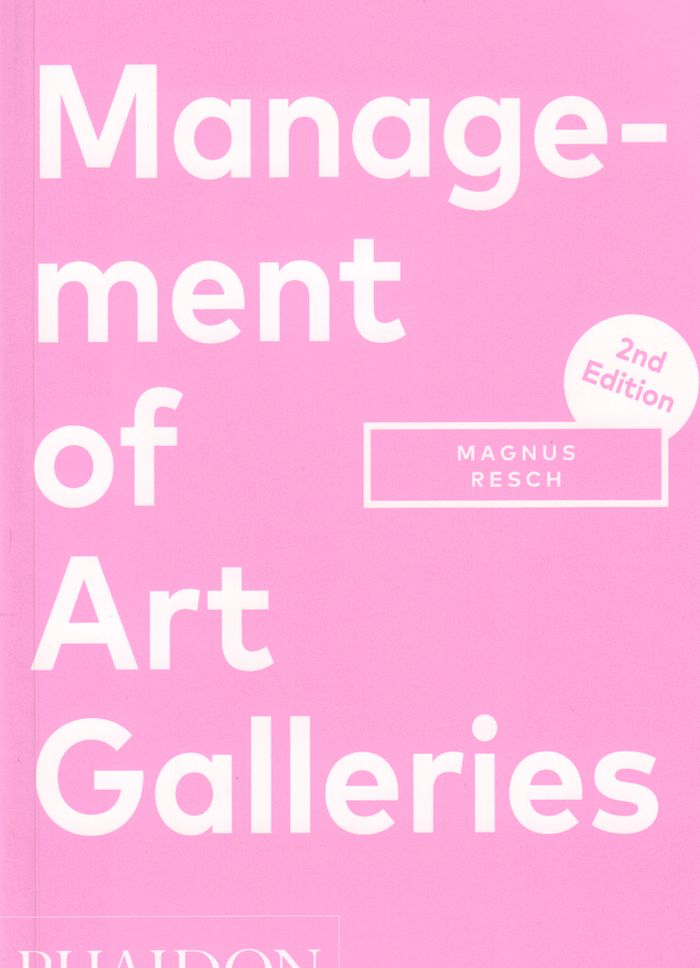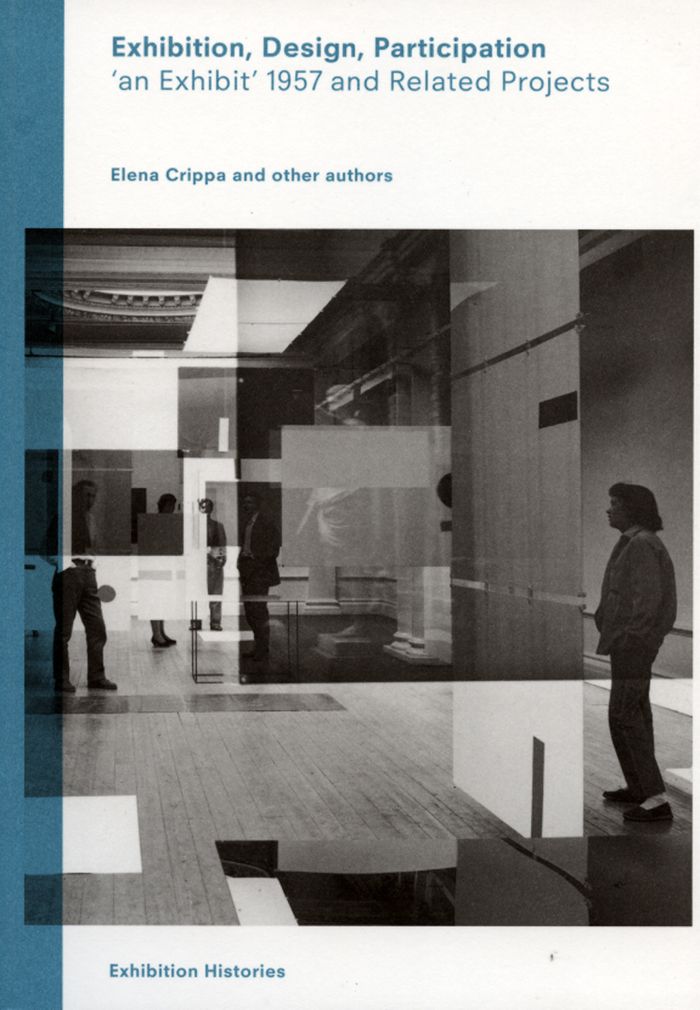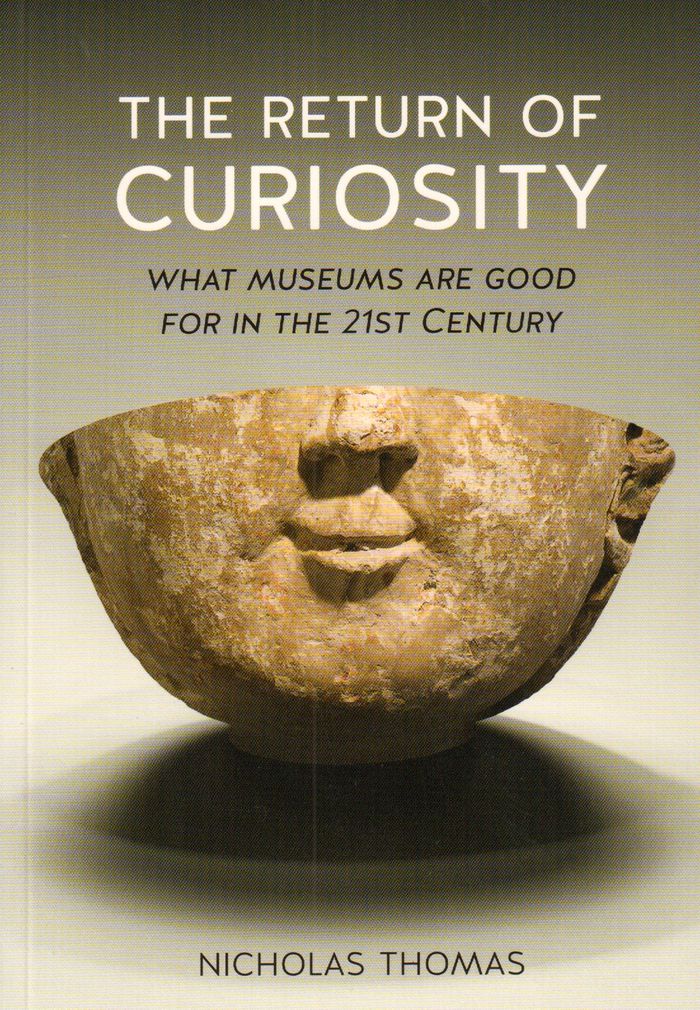$42.95
(available to order)
Summary:
An increasing proportion of exhibitions are curated by artists rather than professional curators. In this ground-breaking book Alison Green provides the first critical history of visual artists curating exhibitions. The artist emerges as someone who carries a special responsibility for critiquing art’s institutions, brings considerable creativity to the craft of making(...)
When artists curate: contemporary art and the exhibition as medium
Actions:
Price:
$42.95
(available to order)
Summary:
An increasing proportion of exhibitions are curated by artists rather than professional curators. In this ground-breaking book Alison Green provides the first critical history of visual artists curating exhibitions. The artist emerges as someone who carries a special responsibility for critiquing art’s institutions, brings considerable creativity to the craft of making exhibitions and, through experimentation, has changed the way exhibitions are understood to be authored and experienced. But the book also establishes a curious ubiquity to the artist-curated exhibition. Rather than being exceptional or rare, artists curate all the time and in all kinds of places: in galleries and in museums, in studios, in borrowed spaces such as shopfronts or industrial buildings, in front rooms and front windows, in zoos or concert halls, on streets and in nature. Seen from the perspective of artists, showing is a part of making art. Once this idea is understood, the history of art starts to look very different.
Museology
$49.95
(available to order)
Summary:
In one of the most comprehensive analyses ever written on the subject, Michael Tymkiw reassesses the relationship between Nazi exhibition design and modernism. While National Socialist exhibitions are widely understood as platforms for attacking modern art, they also served as sites of surprising formal experimentation among artists, architects, and others, who often drew(...)
Nazi exhibition design and modernism
Actions:
Price:
$49.95
(available to order)
Summary:
In one of the most comprehensive analyses ever written on the subject, Michael Tymkiw reassesses the relationship between Nazi exhibition design and modernism. While National Socialist exhibitions are widely understood as platforms for attacking modern art, they also served as sites of surprising formal experimentation among artists, architects, and others, who often drew upon and reconfigured the practices and principles of modernism when designing exhibition spaces and the objects within. In this book, Tymkiw reveals that a central motivation behind such experimentation was the interest in provoking what he calls "engaged spectatorship"—attempts to elicit experiences among exhibition-goers that would pique their desire to become involved in wider processes of social and political change.
Museology
$56.95
(available to order)
Summary:
The study of the museum visitor has undergone a radical transformation. This collection brings together imaginative research that encourages new conclusions. Some questions involve the visitor's identity, what she brings to her museum experience. Can we gain entry into this experience? Does more technology really increase access to the objects themselves? Others probe the(...)
Visiting the visitor: an enquiry into the visitor business in museums
Actions:
Price:
$56.95
(available to order)
Summary:
The study of the museum visitor has undergone a radical transformation. This collection brings together imaginative research that encourages new conclusions. Some questions involve the visitor's identity, what she brings to her museum experience. Can we gain entry into this experience? Does more technology really increase access to the objects themselves? Others probe the very nature of museum-going and exhibition making, demanding that we reexamine the traditional exhibition to reposition the visitor and her meaning-making at the center. Each author here has asked unfamiliar questions and responded with fresh answers.
Museology
$34.95
(available to order)
Summary:
A curatorial situation is always one of hospitality. It implies invitations to artists, artworks, curators, audiences, and institutions; people and objects are received, welcomed, and temporarily brought together. It offers resources for material and physical support while also responding to a need for recognition, respect, or attention. Finally, and very importantly, a(...)
Cultures of the curatorial 3: Hospitality. Hosting relations in exhibitions
Actions:
Price:
$34.95
(available to order)
Summary:
A curatorial situation is always one of hospitality. It implies invitations to artists, artworks, curators, audiences, and institutions; people and objects are received, welcomed, and temporarily brought together. It offers resources for material and physical support while also responding to a need for recognition, respect, or attention. Finally, and very importantly, a curatorial situation operates in the space between an unconditional acceptance of the other and exclusions legitimized through various rules and regulations. This publication analyzes, from the perspective of hospitality, the curatorial within the current sociopolitical context through key topics concerning immigration, conditions along borders, and accommodations for refugees. The contributions in this volume, by international curators, artists, critics, and theoreticians, deal with conditions of decontextualization and displacement, encounters between the local and the foreign, as well as the satisfaction of basic human needs.
Museology
$44.00
(available in store)
Summary:
In an empty factory unit tucked away in Berlin’s Köpenicker Strasse, The Proletarian Building Exhibition was mounted with the humblest of resources in 1931. It marked the first action by a group of revolutionary architects, builders, and students forming the Kollektiv für sozialistisches Bauen under the architect Arthur Korn. Taking aim at modernist architects(...)
May 2016
Collective for a socialist architecture: proletarian building exhibition 1931
Actions:
Price:
$44.00
(available in store)
Summary:
In an empty factory unit tucked away in Berlin’s Köpenicker Strasse, The Proletarian Building Exhibition was mounted with the humblest of resources in 1931. It marked the first action by a group of revolutionary architects, builders, and students forming the Kollektiv für sozialistisches Bauen under the architect Arthur Korn. Taking aim at modernist architects participating in the German Building Exhibition and CIAM, they cast architecture as an instrument of power, questioned capitalist solutions to the housing question, and unveiled planning approaches imported from the then-Soviet Union. A full facsimile of the exhibition manifesto/catalog and exhibition panels is featured in addition to contributing essays by contemporary architects, writers and educators, and the Collectives’ Annual Report including a proposed work program and statement of intent. Historical photos are interspersed throughout providing a full reconstruction of this significant architectural and sociopolitical event.
Management of art galleries
$35.00
(available to order)
Summary:
What makes a commercial art gallery successful? How do galleries get their marketing right? Which potential customer group is the most attractive? How best should galleries approach new markets while still serving their existing audiences? Based on the results of an anonymous survey sent to 8,000 art dealers in the US, UK, and Germany, Magnus Resch's insightful(...)
Management of art galleries
Actions:
Price:
$35.00
(available to order)
Summary:
What makes a commercial art gallery successful? How do galleries get their marketing right? Which potential customer group is the most attractive? How best should galleries approach new markets while still serving their existing audiences? Based on the results of an anonymous survey sent to 8,000 art dealers in the US, UK, and Germany, Magnus Resch's insightful examination of the business of selling art is a compelling read that is both aspirational and practical in its approach.
Museology
$34.95
(available to order)
Summary:
This seventh volume in Afterall’s Exhibitions Histories series focuses on the radical project ‘an Exhibit’ (at the ICA, London in 1957), which emerged from a decade of testing the formats and possibilities of exhibition-making. A collaboration between two artists, Richard Hamilton and Victor Pasmore, and a critic and curator, Lawrence Alloway, the show was(...)
Exhibition, design, participation: 'an exhibit' 1957 and related projects
Actions:
Price:
$34.95
(available to order)
Summary:
This seventh volume in Afterall’s Exhibitions Histories series focuses on the radical project ‘an Exhibit’ (at the ICA, London in 1957), which emerged from a decade of testing the formats and possibilities of exhibition-making. A collaboration between two artists, Richard Hamilton and Victor Pasmore, and a critic and curator, Lawrence Alloway, the show was simultaneously an investigation into abstract environmental forms and a participatory experiment that would fundamentally transform the role of the viewer.
Museology
$28.95
(available to order)
Summary:
The Spy Museum, the Vacuum Cleaner Museum, the National Mustard Museum—not to mention the Art Institute, the Museum of Modern Art, and the Getty Center: museums have never been more robust, curating just about everything there is and assuming a new prominence in public life. The Return of Curiosity explores museums in the modern age, offering a fresh perspective on some(...)
The return of curiosity: what museums are good for in the 21st century
Actions:
Price:
$28.95
(available to order)
Summary:
The Spy Museum, the Vacuum Cleaner Museum, the National Mustard Museum—not to mention the Art Institute, the Museum of Modern Art, and the Getty Center: museums have never been more robust, curating just about everything there is and assuming a new prominence in public life. The Return of Curiosity explores museums in the modern age, offering a fresh perspective on some of our most important cultural institutions and the vital function they serve as stewards of human and natural history. Reflecting on art galleries, science and history institutions, and collections all around the world, Nicholas Thomas argues that, in times marked by incredible insecurity and turbulence, museums help us sustain and enrich society. Moreover, they stimulate us to think in new ways about our world, compelling our curiosity and showing us the importance of understanding one another. Thomas looks at museums not simply as storehouses of old things but as the products of meaningful relationships between curators, the public, history, and culture. These relationships, he shows, don’t always go smoothly, but they do always offer new insights into the many ways we value—and try to preserve—the world we live in.
Museology
books
$105.00
(available to order)
Summary:
The experience of engaging with art and history has been utterly transformed by information and communications technology in recent decades. We now have virtual, mediated access to countless heritage collections and assemblages of artworks, which we intuitively browse and navigate in a way that wasn’t possible until very recently. This collection of essays takes(...)
Museums in a digital culture: how art and heritage became meaningful
Actions:
Price:
$105.00
(available to order)
Summary:
The experience of engaging with art and history has been utterly transformed by information and communications technology in recent decades. We now have virtual, mediated access to countless heritage collections and assemblages of artworks, which we intuitively browse and navigate in a way that wasn’t possible until very recently. This collection of essays takes up the question of the cultural meaning of the information and communications technology that makes these new engagements possible, asking questions like: How should we theorize the sensory experience of art and heritage? What does information technology mean for the authority and ownership of heritage?
books
October 2016
Museology
Architecture without walls
$23.00
(available to order)
Summary:
The texts included in this book present five architectural designs realized by Vera Buhß, Giacomo Gianetta, Konstantin Schimanowski, Katharina Schmidt, and Sum-Sum Shen. Instead of being generated and displayed in graphic media and approaching the object of design visually, these architectural environments have been conceived through auditory and literary practices. The(...)
Architecture without walls
Actions:
Price:
$23.00
(available to order)
Summary:
The texts included in this book present five architectural designs realized by Vera Buhß, Giacomo Gianetta, Konstantin Schimanowski, Katharina Schmidt, and Sum-Sum Shen. Instead of being generated and displayed in graphic media and approaching the object of design visually, these architectural environments have been conceived through auditory and literary practices. The designs presented in this book provide accessibility to new architectural entities not by showing their constructive conditions of emergence, but instead by describing the emergent qualities that configure them as environments. Alex Arteaga’s research integrates aesthetic and philosophical practices relating to the emergence of sense and knowledge, architectural and art practices through phenomenological and enactivist approaches. He studied piano, music theory, composition, electroacoustic music, and architecture in Berlin and Barcelona, and received a PhD in philosophy from the Humboldt University. He heads the Auditory Architecture Research at the Berlin University of the Arts. Boris Hassenstein runs his architectural studio based in Berlin. A strong focus of his work is set on the aspects of construction as a process and collaboration in the genesis of architecture. He studied architecture in Berlin. Currently he teaches at the MA Sound Studies and Sonic Arts at the Berlin University of the Arts and is a member of the Auditory Architecture Research Unit at the Berlin University of the Arts.
Museology
